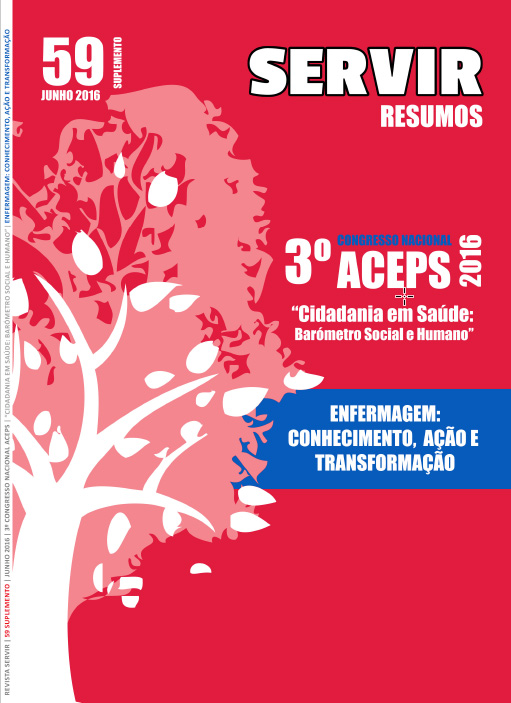Quality of life to the ostomizyd
psychological profile
DOI:
https://doi.org/10.48492/servir0259.23181Palabras clave:
Ostomy, Quality of life, Psychological ProfileResumen
Introduction
An ostomy is a surgically created opening to connect an internal organ to the surface of the body, and may be temporary or definitive. With the construction of the stoma several changes to the social, family and mainly psychological level arise, influencing the quality of life of the ostomized. As such, the realization of a study addressing the problem was proved relevant.
Objective
This is a quantitative, descriptive-analytical, with cross section study, whose goals were to evaluate the Quality of life (Qol) of people with Ostomy and to determine the influence of psychological variables on Qol.
Methods
Data collection was carried out in a sample consisting of 104 definitely ostomized individuals, 58 men and 46 women, aged between 24 and 91 years old, being the average 64 years.
Results
In what concerns the psychological variables, it was found that the better the self-concept (r=.667; p=.000) and self-esteem (r=.656; p=.000) the best is QoL. Regarding body image (r=-626; p=.000), it was found that the larger dissatisfaction, the worst Qol. The less accentuated the neuroticism (r=-.346; p=.000) and the higher the extroversion (r =.506; p =.000) the best is Qol. Finally, when the mood is negative Qol is worse (r =-.721; p =.000). We also infer that the psychological variables (self-concept (.445), self-esteem (.430) and depression (.519) are predictive of Qol, respectively explaining 44.60%, 43.10% and 51.90% of its variability.
Conclusion
Given the results we infer that it is necessary to be attentive to the needs of the ostomized person, as well as to their psychological profile in order to plan health interventions that minimize the effect of the ostomy presence in their carrier’s Qol.
Descargas
Descargas
Publicado
Cómo citar
Número
Sección
Licencia
No intuito de promover a livre circulação do conhecimento, a Servir funciona em regime de acesso livre (open access). Todo o seu conteúdo está disponível e protegido sob a licença Creative Commons (CC BY 4.0).
A revista permite o auto-arquivo em repositórios institucionais de todas as versões, podendo ficar imediatamente disponíveis.






